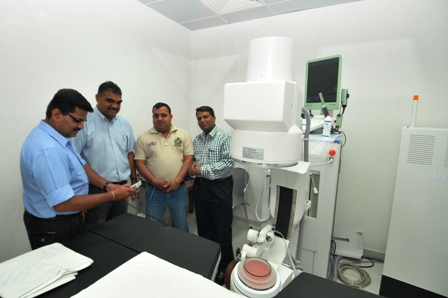New machine rescues kidney stone patients from surgery |01 April 2013

Experts from India including Dr Mahesh Sable are here to show our doctors how the machine works and the cases in which it should not be used.
“We are here to offer application training; how to use the machine, how to locate the stone, how much energy to deliver in a particular case and what are the criteria to keep in mind,” said Dr Sable.
“Before doctors used to cut the patients’ bodies and take out the stone but that is not required now. The stone can be broken down from outside without having to cut the patient at all.
“It is fragmented by the energy from the machine and the resultant powder will pass out of the body in urine.”
He and Dr Lawrence Reginald said many factors in food, water or the way a body processes proteins as well as hereditary factors, made worse when people do not drink enough water, give rise to kidney stones.
“This is a very hot country where people sweat a lot and they do not replace the lost water and we are prone to uric acid stones – the most common here – because we eat a lot of red meat and take too much beer.
“The recurrence rate is also very high. People with stones have 30-40% chance of getting another one,” said Dr Reginald.
The sad thing is here we have people who have lost kidneys because of the stones.
“There are also many people who walk up and down without any signs at all, in which case it is very dangerous, because these are the people who lose their kidneys after – in many cases – the stone fills up three quarters of the kidney.
“Many do not feel anything or they simply get frequent urinary infections, going to the doctor often for urinary tract infections which are many times treated without follow up to see the root cause.
“Many suffer colic pain or pass urine with blood or become very sick after being unable to pass urine for many hours.”
Dr Reginald said the unit requested for the machine as there was a real need for it and appreciated the donation saying a patient now only needs 60 to 90 minutes to treat.




